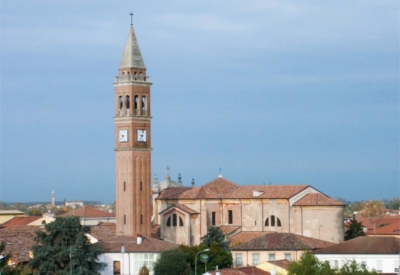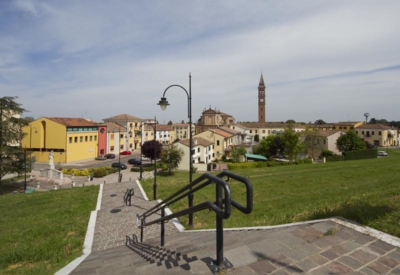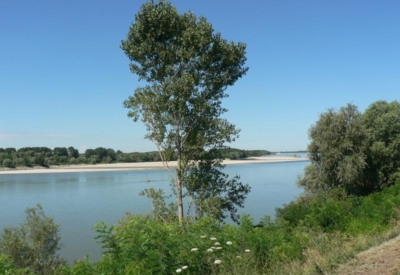OCCHIOBELLO
The history of the town of Occhiobello goes back a long way. Archaeological finds show that there were early forms of life in the area even in prehistoric times, located north of the present-day town, near the Piacentina district. Over the millennia, Occhiobello underwent considerable transformations, natural cataclysms of all kinds and historical-political changes with the continuous invasions of different civilisations, including the Celts, Etruscans and Gauls, etc. During the Roman Republic, around the 2nd century B.C.E., the Occhiobello area was considered important for rural traffic. Later, with the Roman-Barbaric reign of Odoacer, there was a dark period characterised by destruction and the loss of lives that affected the whole of Polesine. Economic and civil recovery occurred around the year 754, when the territory became Papal property, an ecclesiastical fiefdom with a political organisation closely linked to the temporal power of the Church.
Like the whole of Polesine, Occhiobello also became property of the Ferrarese government, which, around the year 1000, entrusted the Marquis de’ Contrari, a nobleman from Ferrara, with the marquisate of Ferrarese Polesine. The marquisate was formed by three areas: Le Casette, modern-day Occhiobello, Gurzone and Santa Maria Maddalena, which was still joined with Pontelagoscuro until 1152. In that year, the Ficarolo flood separated the two villages, one on the right bank (Pontelagoscuro) and one on the left bank (Santa Maria Maddalena). The territory remained under Este rule until 1597 when Alfonso II d’Este died without an heir and his entire duchy passed to the Papal State. During this period, new settlements sprang up in the districts of ‘Chiavica’ and ‘Livelli’, and Santa Maria Maddalena, already a retreat for the Dukes of Este and then the noble Pepoli family, became more important.
The name Occhiobello appears around 1700, the year in which the name ‘Le Casette’ fell out of use and in which the development of the town was favoured by its proximity to Ferrara. The Holy See’s rule, which lasted about two hundred years, was abruptly interrupted by the Napoleonic invasion in 1797. A few years later, in 1815, after the Congress of Vienna, the French were succeeded by the Austrians, who caused even more discontent among the population, especially due to the annexation to the province of Rovigo. The Battle of Occhiobello, during the Austro-Neapolitan war, in which the King of Naples, Joachim Murat, was defeated by the Austrian general Johann Maria Philipp Frimont, was fought near the town.
After about 50 years, in 1866, Austrian rule ended with the Treaty of Vienna and Veneto was ceded to the Kingdom of Italy.
Worth Visiting
The Church of San Lorenzo (1716-1743)
The Church of Giovanni Battista
The Oratory of the Beata Vergine del Rosario (18th century)
The Oratory of Sant’Antonio
The Oratory of Sant’Eurosia
The house of Carlo Cavriani, carbonaro
Villa Prearo
Palazzo Pepoli
Don’t Miss
Po Delta Regional Natural Park




